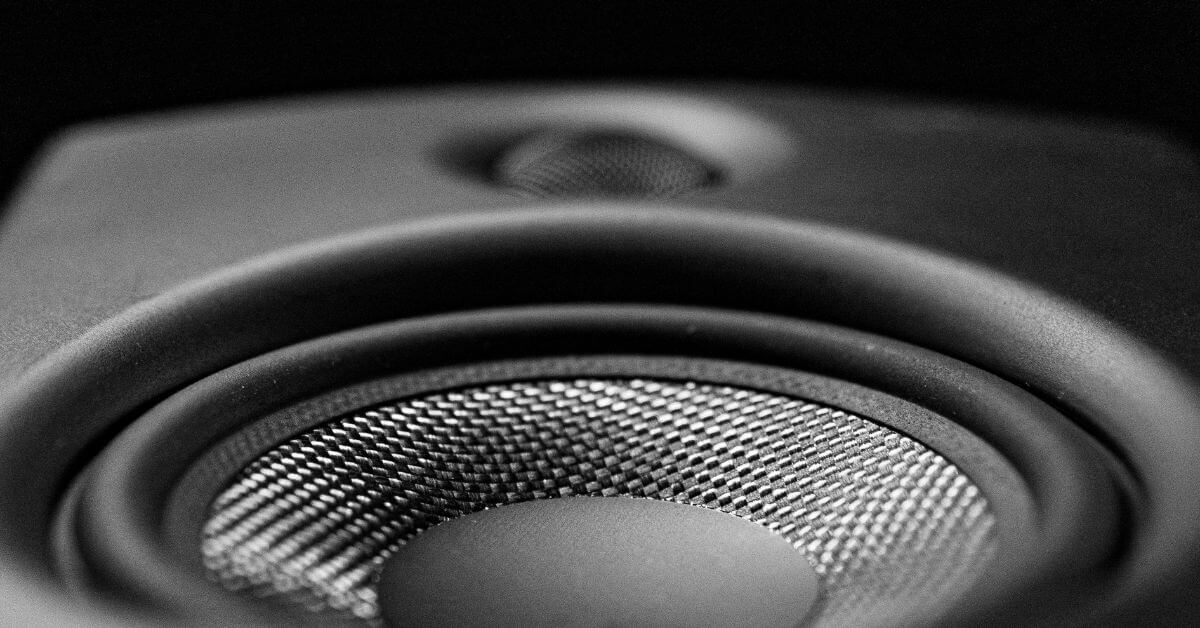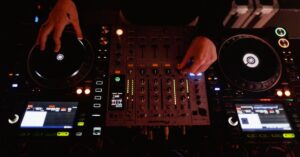Basslines, along with kick drums, represent techno’s backbone. They control the energy, drive the groove, and play an important role in the track’s narrative. A fascinating bassline might mean the difference between a song that gets you dancing and one that fades into insignificance. There are no hard and fast rules in music, but there are techniques and approaches that can help you improve your bassline playing. Allow me to share some tips along the way that have proven valuable over time.
Frequency range
To be able to make decent basslines, you must first understand the frequency ranges that are commonly found in basslines. When we talk about basslines, we usually imply frequencies ranging from 60 to 250 Hz. These are the frequencies that you can literally feel when they are played on massive PA systems. They add greatly to the low end groove and get people dancing in clubs and at festivals.
Just below this is the kick drum between round about 40-60 Hz Personally, I prefer G or G# kick drums (49 or 51 Hz), but this is a question of personal preference. Anything below that is referred as sub-bass ~ 0 – 40Hz. These very low frequencies are hardly perceived by the ear and are only reproduced by very few sound systems. As a result, for a decent bassline, focus on the frequency range specified above and place it ‘above’ the kick to ensure that it harmonizes well with it.
Few note changes; often just one note
When you look at standard techno basslines, they are usually extremely simple, consisting of only a few notes. Of course, it’s all a matter of taste, but huge note shifts across several octaves are unusual in techno and can rapidly generate a jazzy feeling. As a result, in my opinion, the so-called techno rumble has persisted for a while now, as it lacks apparent harmonic content and merely covers the bass spectrum without playing any particular note. This creates a certain vibe because it cannot be classified traditionally. At this point, the tendency is gradually shifting away from rumbles towards simpler basslines. That is why my advice is to use small note leaps, if possible.
Often, only one note is used, such as a filtered 909 tom or kick drum sample. But, as always, there are no boundaries here. In theory, you can pitch down and filter all types of sounds, including vocals, until you get bass content and utilise it as a bassline. To stand out from the throng, use your originality.
Short kicks/ long kicks
Another important consideration is the length of the kick drums and the timing of the bassline between the kick drums. In general, make sure that the bassline and kick drum do not play at full volume at the same time. The first thing to do is to programm the bassline in a way that it does not play on the same 4/4 of the kick drum. You also need to think about which element you want to give more presence in the mix.
If you wish to highlight the kick drum, you can use fat, ‘long’ kick drums, which have a long release time. However, placing a bassline with such kick drums is more challenging because they tend to ‘clash’ quickly. You may avoid this clash by keeping the kick drum short. This provides the bassline more ‘space’ and allows it to ‘breathe’ in between kicks.
However, not only should the length of the kick be modified, but also that of the bassline, so that the two elements work well together. This can be accomplished by using the aforementioned decay/release time, as well as amplitude modulation, also known as ‘sidechain’. This allows you to change the volume of the bassline signal and ‘avoid’ the kick.
Processing
How you process your basslines, like so many other aspects in music, is a subjective decision. Nonetheless, there are a few recommendations that have shown to be valuable and may be of assistance to you.
EQ
Basslines and low end require precise EQing. As previously stated, the bassline’s frequencies should be sitting exactly where they can have the greatest effect. To accomplish this, you must remove all undesirable frequencies. You can experiment with different EQ slopes to find what sounds best. In my opinion, using softer slopes and allowing a few high frequencies to peek through gives you a little more punch.
With low frequencies, on the other hand, it is best to totally remove the sub-frequencies outlined above, as they are often impossible to replicate and thus merely take up headroom in the mix. In general, you should ensure that the EQs you apply do not impact the phase, as this can cause undesirable phasing. As a result, several EQs include a variety of settings, including natural and linear phase.
Saturation
Saturation can be used to make the low end even more powerful and ‘warmer’. Tape saturation is very popular for processing low end since it dampens high frequencies and adds ‘warmth’. Other sorts of saturation, however, can also be be utilised here to distort and compress the bass slightly. You may learn more about how saturation works and why it is useful for low end in this article here.
Compression
In addition to sidechain compression stated before, you want the low end to be as balanced as possible so that it does not sound ‘muddy’. Compression is one approach to avoid this from happening. It can be used to intercept and control rapid volume spikes. Quick attack times are an effective approach to intercept spikes. You must experiment with the release time and try to capture the track’s groove so that the compressor may resume operation on the next note. Compressors are also useful on the entire low-end mix bus because they may glue the various elements together.
Mono compability
The low end should be kept mono for a variety of reasons, including minimising compatibility issues in the succeeding utilisation chain. This is why, in the final step of the processing chain, everything should be converted to mono. However, you must use caution here as well, as the phase might bring up issues.
Rhythm, swing
In terms of bassline rhythm, it is generally recommended to emphasise the offbeats between the kicks. The interaction between the 4/4 kick and the bassline is what eventually results in the low end groove. To highlight the groove, try swinging the notes gently forwards or backwards. Here’s where you can learn more about groove and how swing creates it.
When it comes to bassline patterns, you may simply use a sequencer to experiment with filling the notes between the kick beats. Basically, it’s about creating a simple beat around the kickdrum. This is an example of a classic techno bassline pattern:

Conclusion
Crafting compelling techno basslines involves a nuanced understanding of frequency ranges, note selection, kick drum dynamics, processing techniques, and rhythmic interplay. By focusing on the 60-250 Hz range, keeping note changes minimal, and strategically timing bassline hits around kick drums, producers can enhance energy and groove. Processing tools like EQ, saturation, compression, and careful attention to mono compatibility refine the bass’s impact and clarity. Lastly, experimenting with rhythm, swing, and sequencer patterns adds depth and character to techno basslines, enriching the sonic landscape of tracks. With these considerations in mind, producers can elevate their productions and captivate audiences on dance floors worldwide.







